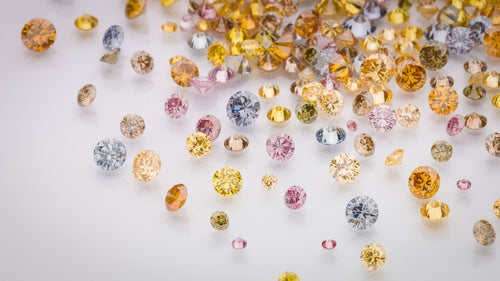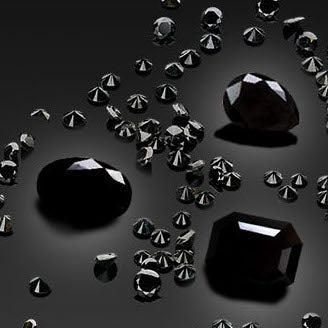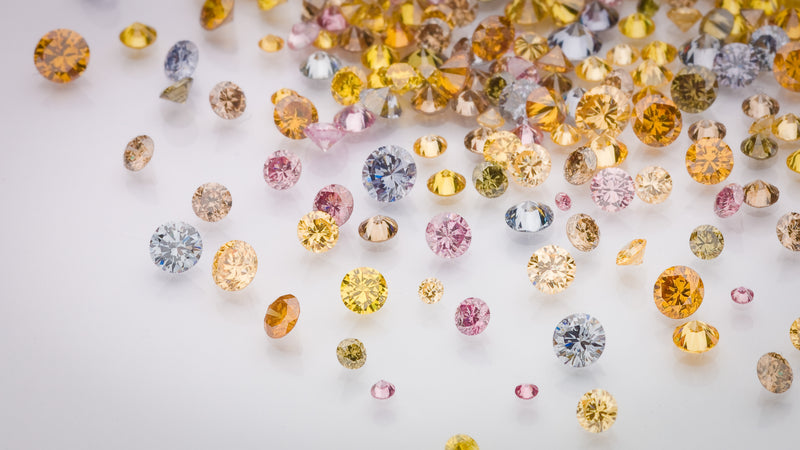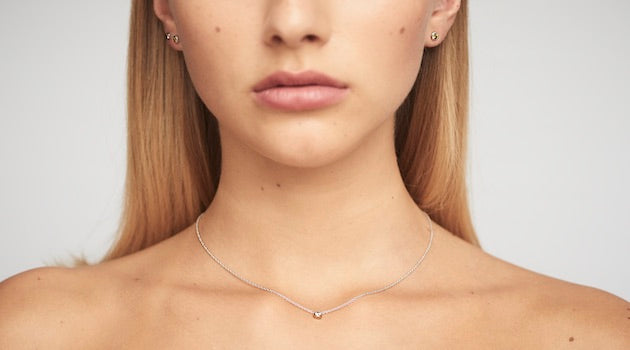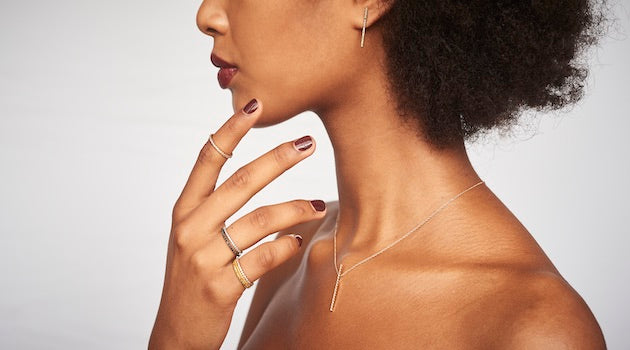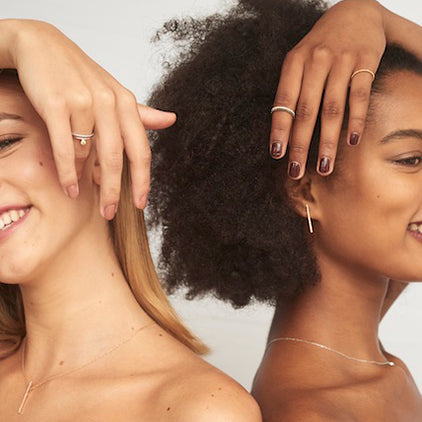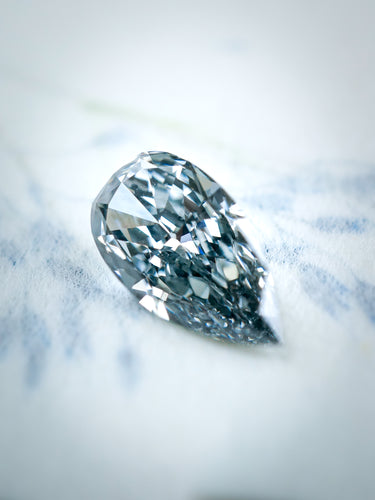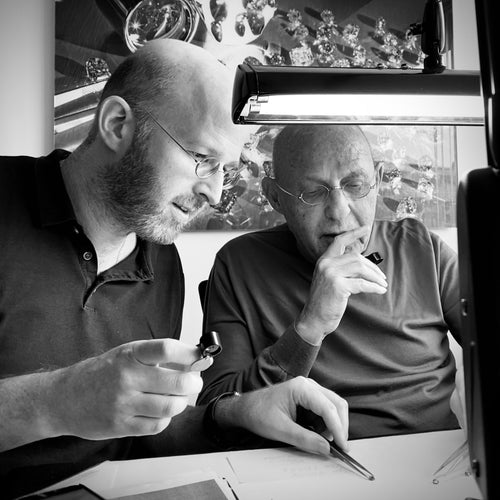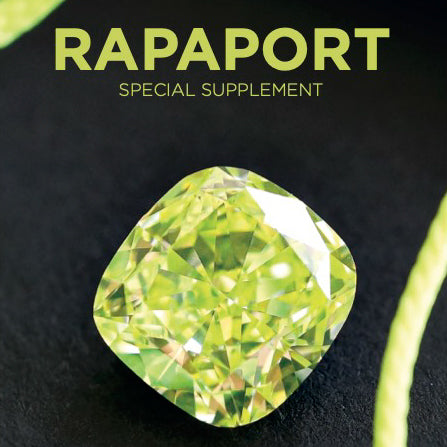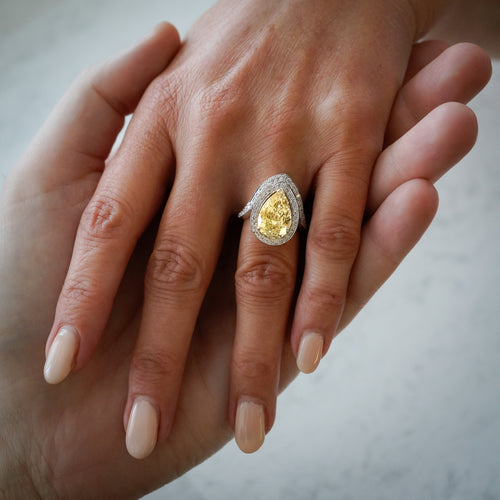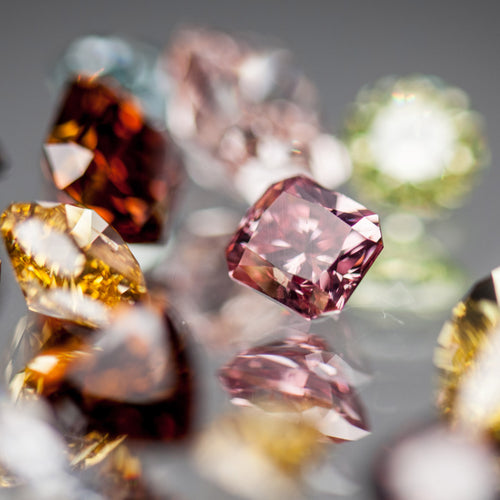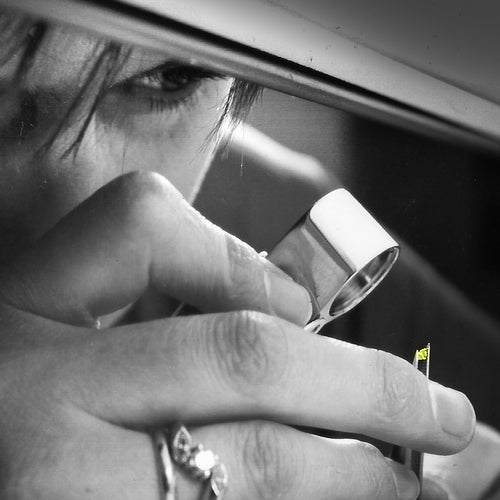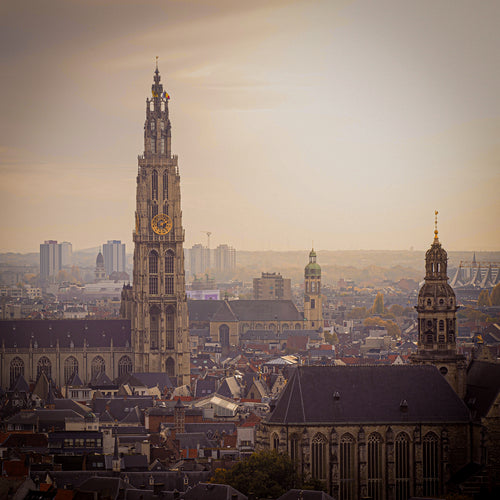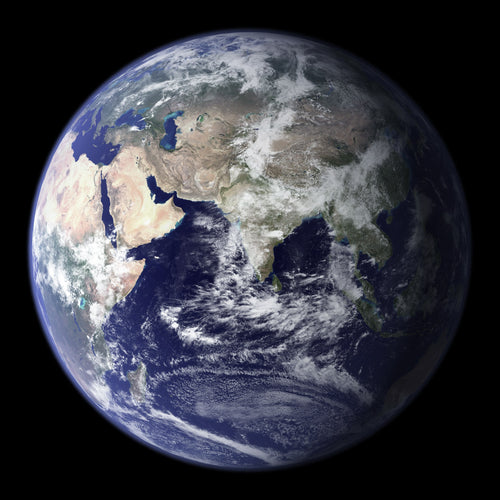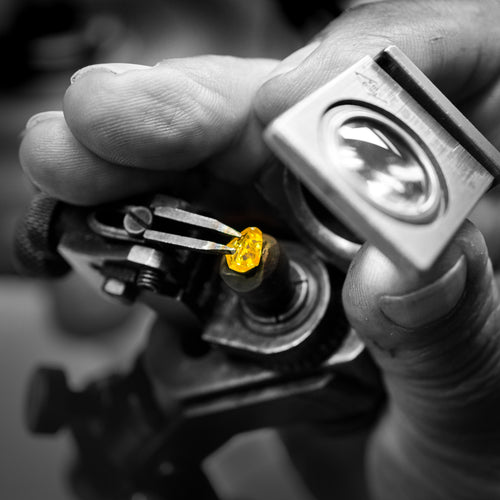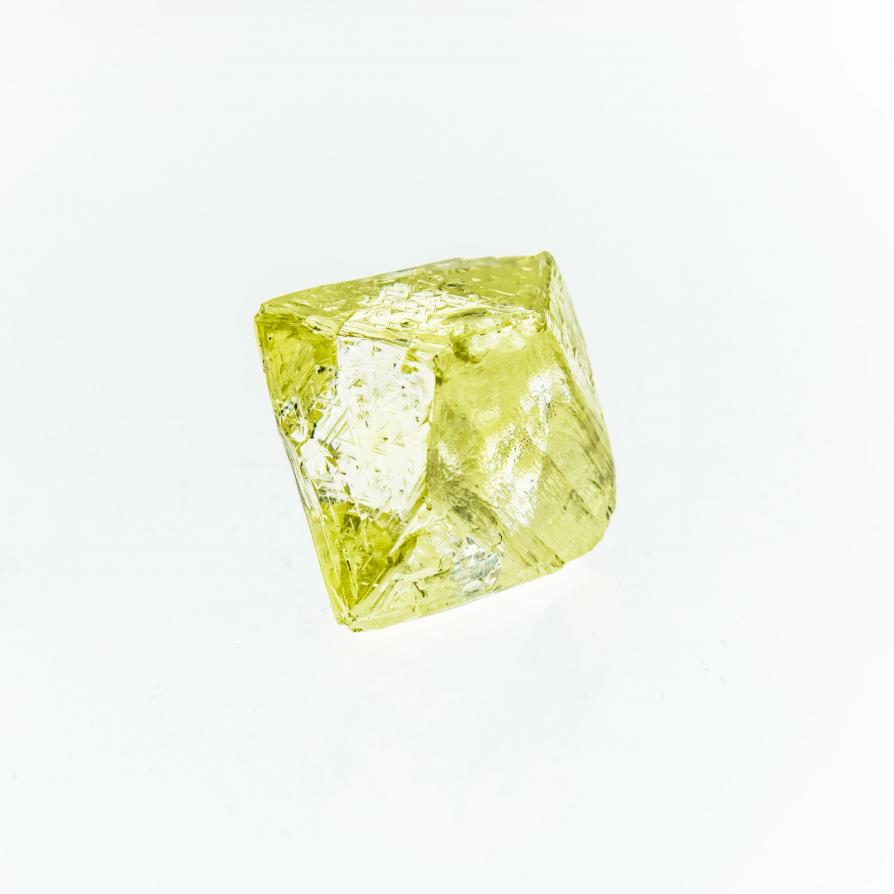

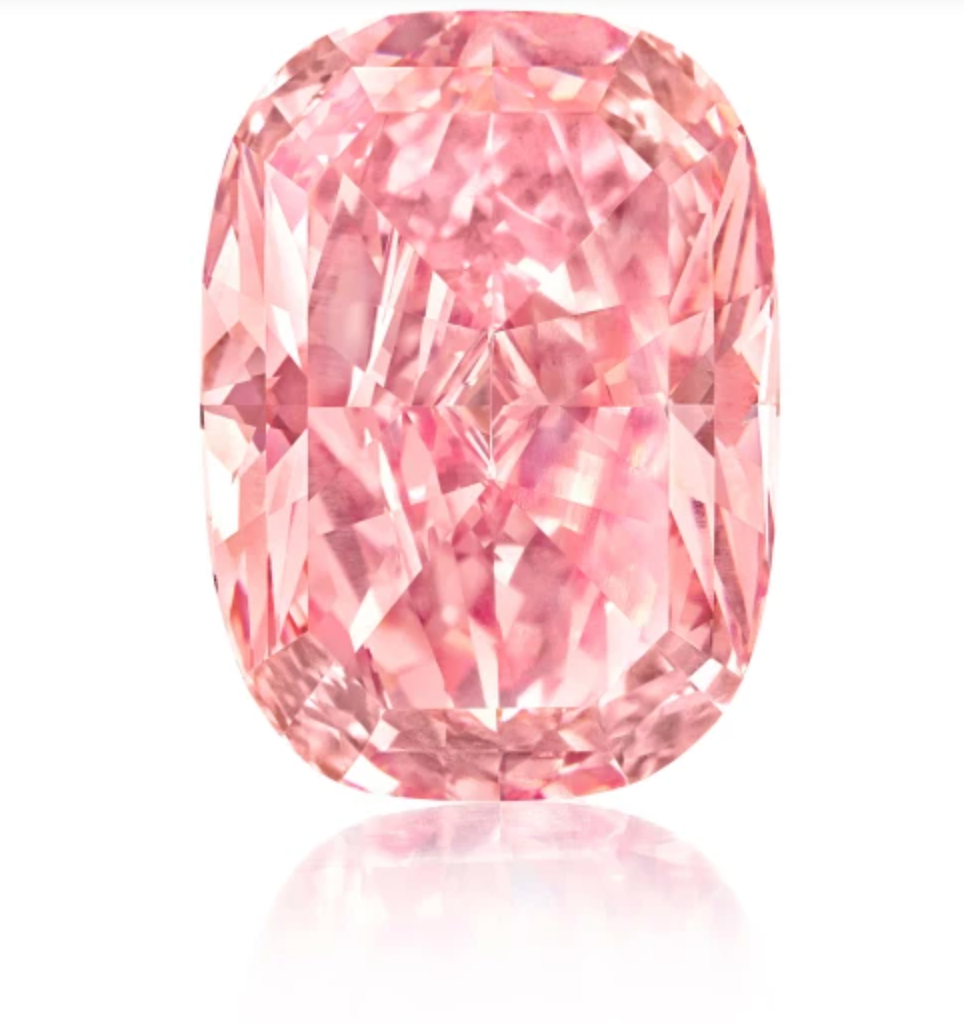
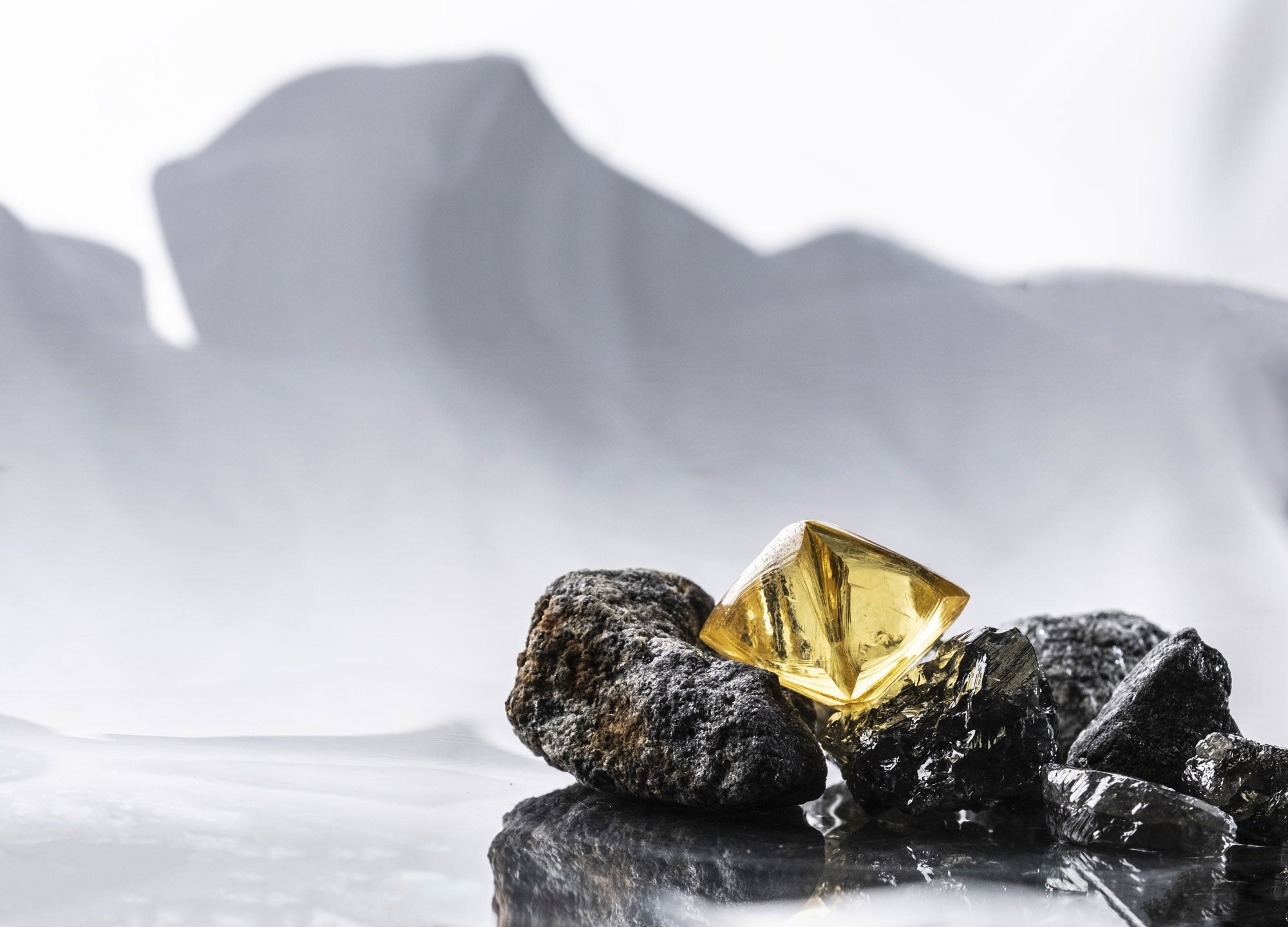
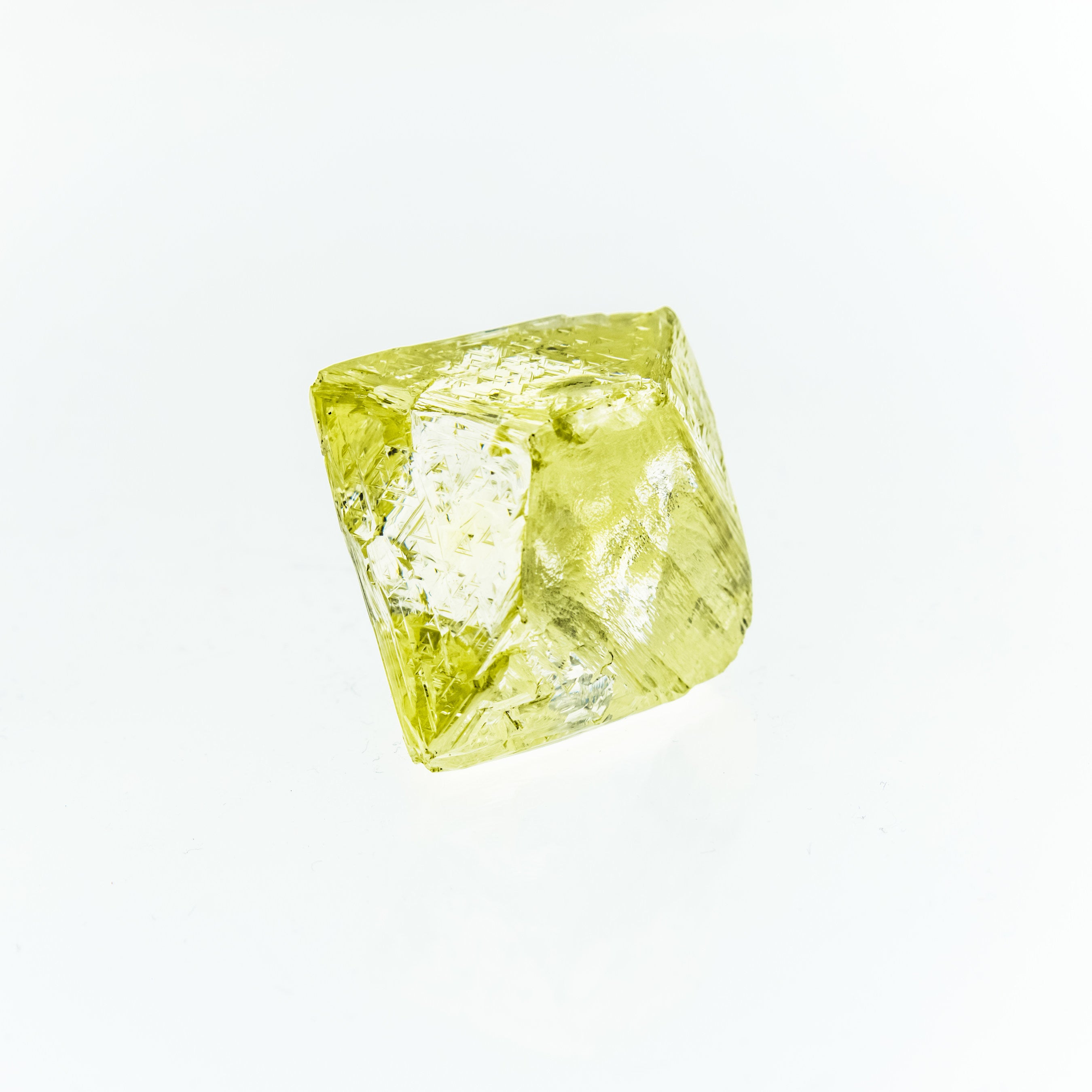
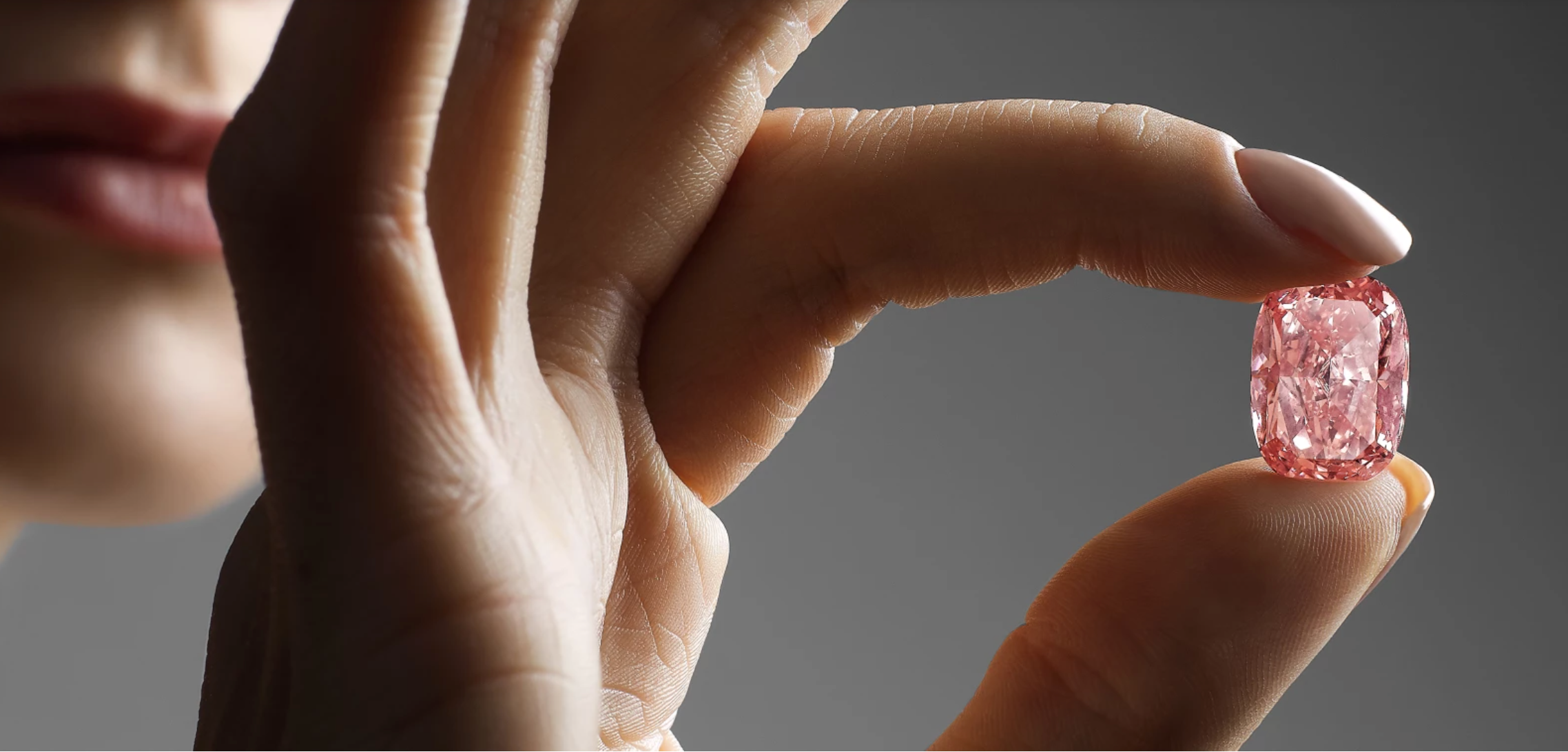
Rock Star Prices
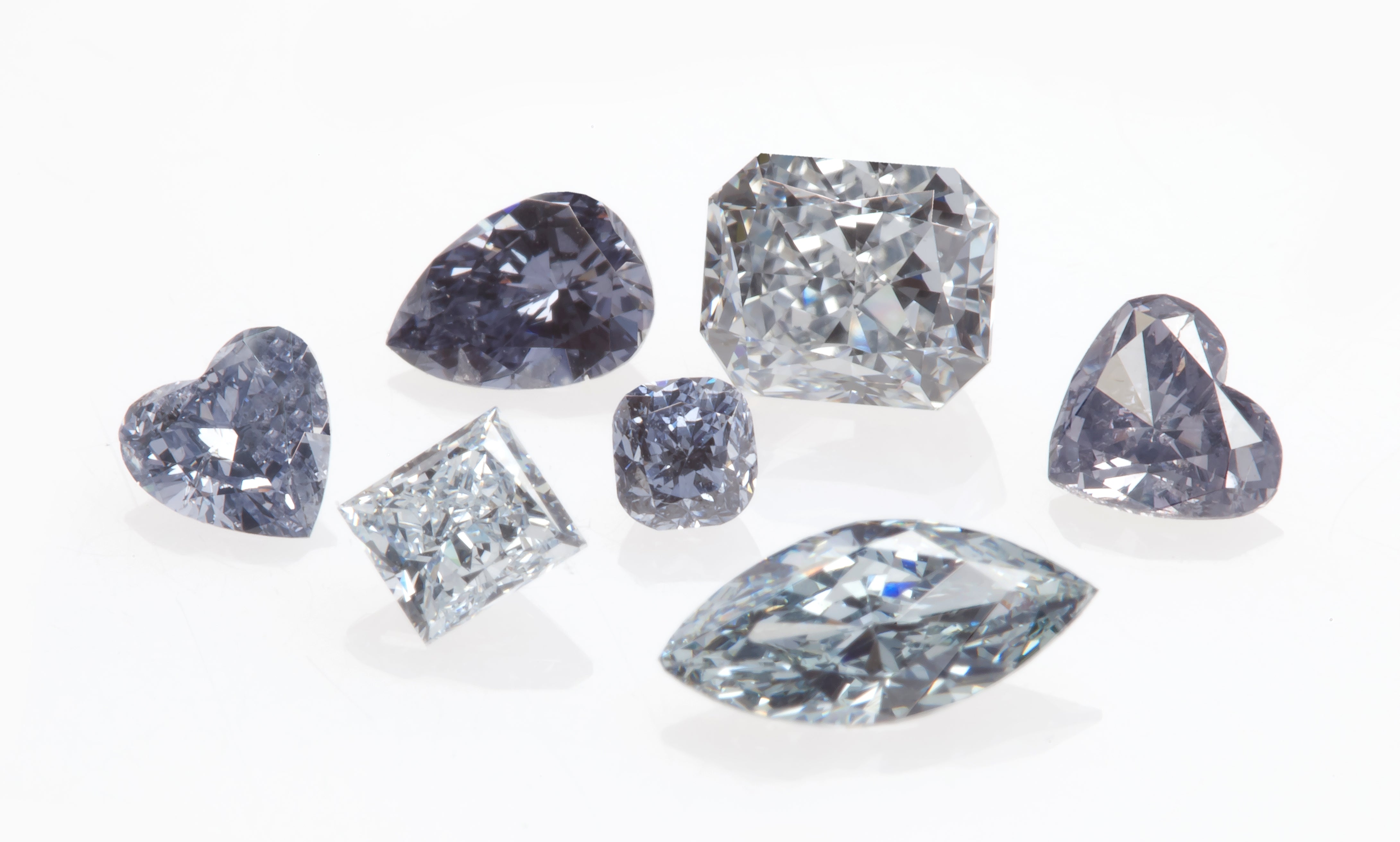
Rapaport By Ettagale Blauer
Colored diamond prices are reaching the stratosphere and beyond. Rapaport Magazine takes a look at colored diamond price trends over the past five years.
How does one price a work of art? That is the rhetorical question posed by dealers of singular, large, fancy color diamonds. If there’s an answer, it would seem to be “anything the market will bear.” With lots of new money coming into the marketplace from freshly minted billionaires around the globe, demand is very high.
The soaring prices are encouraged by the fact that mines continue to dole out fancy color diamonds with an eyedropper. Other than Argyle’s annual 20 million carats of browns, the supply of fancy color diamonds is tiny and likely to become even smaller as older mines produce fewer important colored diamonds.
Unlike white diamonds, where production is relatively predictable, and where color, clarity and cut can be matched to precise price lists to determine value, the unique individuality of colored diamonds makes their pricing much more subjective. The only constant in the colored diamond market is the regular upward trend of prices.
UP IS THE ONLY DIRECTION
Natacha Langerman of Langerman Diamonds, based in the diamond trading district of Antwerp, Belgium, says there has been a “huge change” in prices over the past five years. “For the rarest colors — blue, pink or green — when you can get them, five years ago, a 3-carat stone was $300,000 per carat. Today, that stone would be $1.5 million to $2 million per carat.” The ever-elusive orange and purple diamonds were $20,000 a carat five years ago. Today, they would command $300,000 a carat. Langerman points to a 14.82-carat orange diamond that fetched more than $35 million at Christie’s Geneva in November 2013, a price she called “completely crazed.”
One of the reasons for the explosive increase in prices is the absolute rarity of pure colors. For this reason, Langerman advises her clients to consider a modified color such as an orange diamond with a yellowish modifier. She points to the small range of grades available for fancy color diamonds as a reason for the pricing frenzy.
“Each colored diamond is different, yet there are only five intensities on the Gemological Institute of America (GIA) color scale,” explains Langerman. This has the effect of awarding two stones with widely varying intensities of yellow the same color grade. For example, “intense” may describe a yellow that sits right on the borderline of the category even though it literally pales next to another yellow with richer body color that still falls within the GIA’s “intense” grading box. This is why Langerman says, “I tell my clients to buy a diamond and not the paper. It’s not good that people focus so much on the description” contained in the gemological grading certificate.
Larry West, president of L.J. West, a colored diamond supplier in New York City’s Diamond District, sees prices for the rarest colors — vivid pink and vivid blue — going up the most. West says these stones have increased at a faster pace than the increase in white diamonds. “Intense pink and blue may have doubled in price over the past five years,” he says. “They are 10 times to 20 times the price of a fine white of comparable size and clarity. Prices on the wholesale market are very strong.”
At the same time, West notes that “Traditional sources have diminished. There is very little coming out of South Africa. There is a demand for anything that is very special in natural fancy colors. Even some of the orangy pink is in demand. People are informed. They are looking to extend their color palette. Retailers are asking for specific colors.”
AT AUCTION
The auction market lies in a strange middle ground, somewhere between a retail store and a wholesale market. But, when it comes to fine, large, fancy color diamonds, here, too, prices are up and goods are extremely scarce. Rahul Kadakia, international head of Christie’s jewelry department, says, “Colored diamonds are rarer and will get extremely expensive. In October 2010, the Bulgari Blue — a triangular-cut fancy vivid blue VS2 weighing 10.95 carats — set in a two-stone ring with a white diamond, sold for $15,762,500 at Christie’s New York. The Winston Blue sold for $23,795,372 at Christie’s Geneva in May 2014 — almost $1.8 million a carat.” Comparing those two stones, the price of a vivid blue increased by 25 percent in less than four years.
Vivid pinks, Kadakia says, are “up 25 percent” in that same time period. “Five years from now, it will be the same increase again.” As for green and orange? “You cannot find them” at any price, he says firmly.
OPENING THE VAULT
The fancy colored stone industry often waits a long time for a special stone to come out of a vault. Consider the 14.82-carat VS1 pear-shaped fancy vivid orange that was sold at Christie’s Geneva in November 2013. “The seller had owned it for 30 years,” says Kadakia. “Thirty years ago, maybe it was $2 million to $3 million total price. Now, it’s that much per carat.” The stone sold for $35,540,612, setting a world record price for an orange diamond. The $2,398,151 price per carat also set a record at auction for an orange diamond.
Even at that stratospheric price, there was no buyer’s remorse. Two days after the sale, the underbidder called in to ask if the new owner was interested in selling, at a profit. The answer was “No. We love it.”
Well-saturated pinks are in their own price bracket, agrees Alan Levy of J. & S.S. DeYoung, a New York City dealer in fine antique goods. “Seven years ago, we sold a 14-carat intense pink diamond. If the buyer was going to buy it from me today, it would cost four times as much — just under $20 million.” Virtually all of J. & S.S. DeYoung’s goods come from estates. With private dealers, everything changes hands “quietly,” Levy notes, out of the glare of the auction market. “In every town in America, there is a family-owned jewelry store or two. Retail customers will walk in and offer something for sale. The retailers turn to us because they don’t have the expertise or experience with this kind of merchandise.”
Gary Schuler, head of Sotheby’s New York jewelry department, compares prices of fine yellow diamonds against whites of comparable size and notes an intriguing difference. At the 3-carat to 5-carat level, he says, both a white and a yellow might go for $50,000 to $75,000. When you get to larger stones, though, he says, “A 10-carat white might be $650,000, while a 10-carat intense yellow will fetch $250,000 to $300,000.” The disparity in price between white and yellow increases with size.
MELEE ALSO ON THE RISE
At the other, smaller end of the spectrum, prices are also up dramatically. Harsheel Shah of Prigems in Los Angeles offers melee ranging from one-half point up to 10 points in a “big range of yellows and browns.” The quality of the melee, he says, is “very high end.” Colors range from fancy light to fancy intense yellows. “Fancy yellow melee is priced at $1,000 to $1,500 a carat. Five years ago, it was half the price.” Prigems maintains its own cutting factories in India, with 50 to 75 cutters working exclusively on fancy color diamonds. “This helps in keeping costs down,” he says, “because we’re not competing with everyone else who can only buy cut stones.”
Prigems deals only with natural colored diamonds and tests the material often to be sure no treated stones have made their way into the parcels of rough. It helps, Shah says, that “we are close to the source. Our stones haven’t had a chance to be tampered with. For companies buying finished products, you don’t know where the supply is coming from.”
MORE COMPETITION, MORE DEMAND
Availability is at the heart of the pricing equation. Raphael Maidi of Maidi Corp. in New York City says, “There is bigger competition for the stones coming from China, India, all over Asia. There is more demand.” Although prices dropped during the recession, today, he says, “prices are up 20 percent to 25 percent on fine goods. On high-quality stones, prices are double. Commercial qualities are about the same.”
Maidi deals in stones from one-half carat up to 15 carats to 20 carats. While yellow diamonds are available, he says, “it’s a bit more difficult to get matching stones.” As for blues, “they’re scarce and prices are very high. When I can find something nice, I buy it, even lower quality, but generally, blues are overpriced.” Though Maidi says he doesn’t see a “correction coming,” referring to a price decline, anytime soon, he notes that “There has to be a point where prices are unsustainable.” Pinks are more available, he adds, at least compared to blue, with lots of demand. “Prices are probably double for pinks in any size, from melee up.”
ENHANCED COLORED DIAMONDS
While prices for natural colored diamonds have escalated, even treated colored diamonds are more expensive than they were five years ago. Nilesh Sheth of Nice Diamonds in New York City says his treated stones satisfy the very large part of the market that cannot afford natural color. In general, he says, “The price differential between natural and treated can be ten times, depending on the color and size.”
Some colors are more difficult to achieve, and therefore more expensive, in treated stones because the starting material is more expensive. Pinks, for example, are more difficult to achieve while blue, yellow and green are easier. Prices of treated diamonds have increased by 10 percent across the board in line with the increase in the price of natural diamonds.Sheth says it’s important to make sure all the paperwork relating to the sale of treated diamonds specifies they are enhanced or treated. “We want the retailer to know,” he says. “Even our packaging indicates ‘color enhanced.’” The irradiation treatment used on these stones is indicated on the certificates and the girdle is laser inscribed by GIA. The treatments, he adds, are permanent.
With mine production of natural fancy color diamonds limited and no new sources on the horizon, coupled with ever-increasing demand, it doesn’t take a crystal ball to forecast higher prices continuing into the future. As Henri Barguirdjian, president of Graff USA, says, “How many Michelangelos are there?”
Article from the Rapaport Magazine - October 2014. To subscribe click here.
